HII has unveiled ROMULUS, a new family of modular, AI-enabled unmanned surface vessels (USVs) powered by the company’s Odyssey autonomous control suite, designed to strengthen U.S. and allied naval operations.
The first in the series, ROMULUS 190, is under construction on a commercial-standard hull for rapid, repeatable production.
At 190 feet in length, it will operate at speeds above 25 knots and a minimum range of 2,500 nautical miles, while carrying up to four 40-foot ISO containers. Development partners include Breaux Brothers, Beier Integrated Systems and Incat Crowther.
HII stated that ROMULUS is aimed at meeting the emerging requirements of the U.S. Navy, Marine Corps, joint forces and allied navies, with an emphasis on scalability, endurance and cost efficiency. Company president and CEO Chris Kastner said: “The future fight demands speed, agility, and resilience, all embedded in the Odyssey-powered ROMULUS family. By matching world-class shipbuilding with decades of unmanned systems expertise, we are delivering a mission-ready, swarm USV capability built for the next generation of operations.”
The Odyssey software, which has already logged more than 6,000 hours on 35 USV platforms with the U.S. Navy, Marine Corps, Coast Guard and international customers, enables both single-vessel and swarm control. Its open, government-aligned architecture is designed to integrate new sensors and payloads quickly, while also supporting collaboration between industry, government and academia.
ROMULUS is reconfigurable to support missions across domains, including counter-unmanned air systems, ISR, strike operations and deployment of unmanned undersea and aerial vehicles. When paired with HII’s REMUS UUVs, it extends undersea reach and strengthens mine countermeasures and anti-submarine warfare capability while reducing risk to manned platforms.
The programme has been developed with input from HII’s Dark Sea Labs Advanced Technology Group and integrates technologies from Shield AI, Applied Intuition and C3 AI for enhanced autonomy, object classification and sustainment.
Key advertised features include compliance with international collision regulations, multi-agent autonomy for complex swarm operations, intelligent operations with health monitoring and sensor fusion, and alignment with future U.S. Navy fleet concepts of operations.
HII said that ROMULUS builds on its track record with the REMUS UUV line, of which more than 700 have been delivered worldwide, and seeks to provide a dual-domain family of systems covering both surface and subsurface operations. Further details are available from HII here.


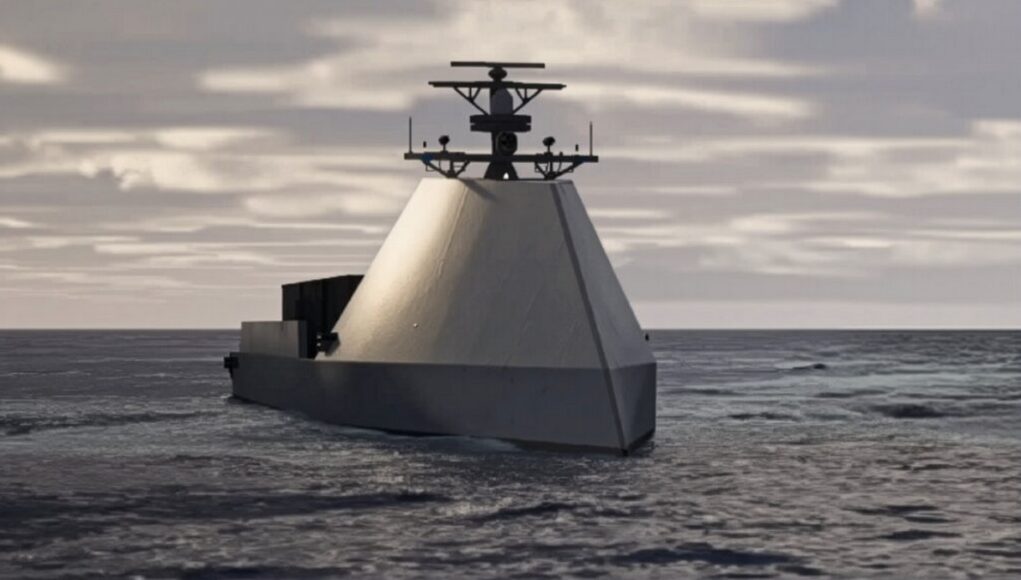

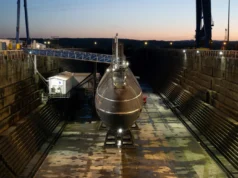
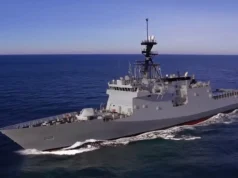
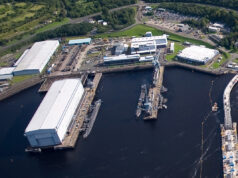


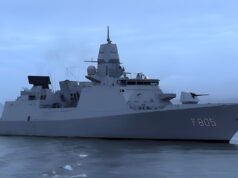


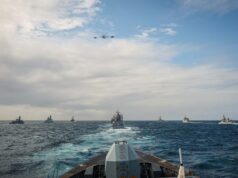

This is the modern Flower Class corvette, cheap, rapidly built and potentially plentiful.
So like a maritime Skynet. ‘SeaNet’? Although I suppose most nets are sea-nets.
The thing looks like it was designed by AI…
Complete with old masts stop a giant visor. Maybe it strobes red like Kit did.
Kitt indeed , ,we were warned by Sarah Connor but no one listened. Judgement day is coming